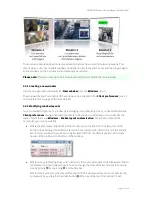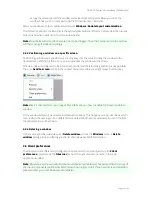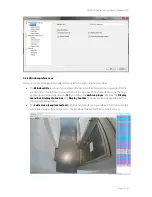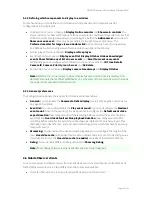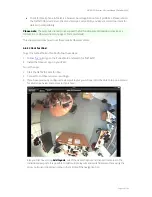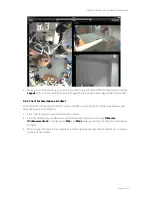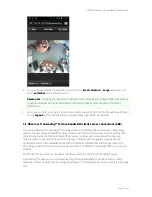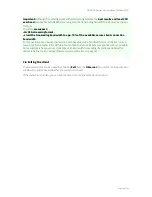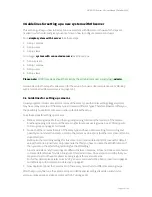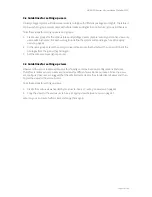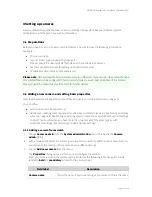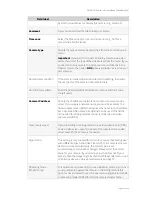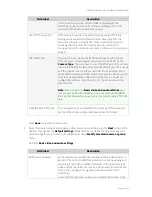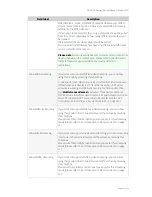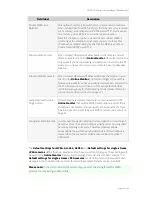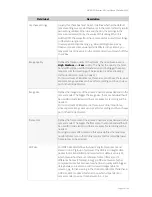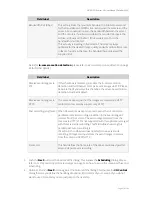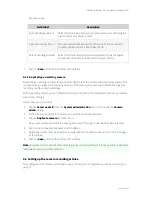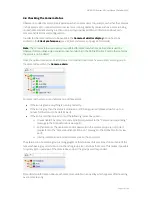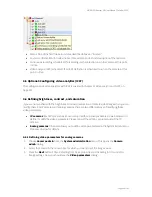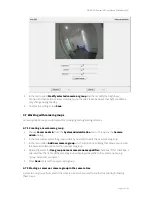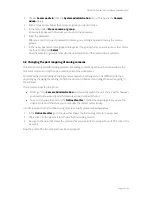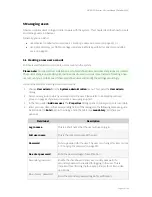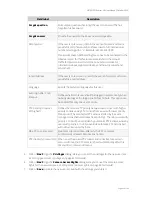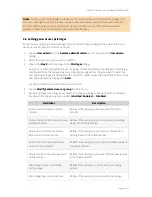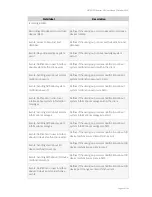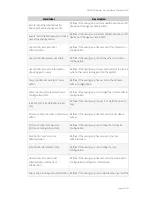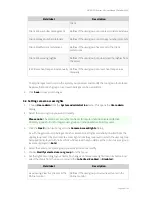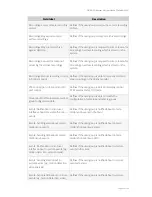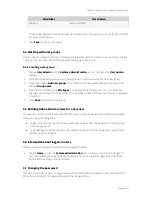
NETAVIS Observer 4.6 User Manual (October 2015)
Page 35 of 204
Field label
Description
Stream MPEG-4 via
Multicast
This option should only be switched on in very special situations.
When marked then the MPEG-4 stream from the camera is received
via "multicast", when disabled via "RTSP over HTTP". Multicast is a
one-to-many, while RTSP is one-to-one type connection.
Mark this checkbox only if you want to have multicast MPEG-4
streaming of the camera. In most cases you want to leave this
checkbox not marked, which means that the MPEG-4 stream is
transmitted via RTSP over HTTP.
Allow Audio to camera
When marked, Observer will allow Audio to the camera and will
offer a button for that in the
Online Monitor
. Of course this feature
only works if you have a working microphone connected to the PC
where you run your client on and your camera has a loudspeaker
function.
Allow Audio from camera When marked, Observer will allow Audio from the camera to your
client (in the
Online Monitor
and for recordings). Of course this
feature only works if you have a working loudspeaker connected to
the PC where you run your client on. Please note that platform
restrictions may apply for this streaming mode (please refer to
2.1
Introduction to Observer clients
on page 11).
Audio from and to share
single button
If this checkbox is marked, then there is only one button in the
Online Monitor
that switches MPEG and Audio on and off. If this
checkbox is not marked, then you will find 3 buttons for the three
functions. See also
6.9 Working with MPEG cameras and audio ()
on
page 63.
Anonymize (distort) audio In some cases Laws do not allow the transmission or recording of
people's voices. The criterion often is whether one can recognize a
person by listening to its voice. Therefore Observer allows
anonymizing the audio stream by distorting it. If this checkbox is
marked then the live and recorded audio will be anonymized
(distorted).
The
Default settings for MPEG-4, H.264, MxPEG
and
Default settings for single-stream
JPEG cameras
define the streaming format for the various streaming types. These settings will
be used in the
Online Monitor
and also for recordings. For multi-stream JPEG cameras, the
Default settings for single-stream JPEG cameras
are of no importance (because for each
view port in the Online Monitor and also for recording separate formats can be specified).
Please note:
In the current version, Observer only supports 1 streaming format for MPEG
cameras for live viewing and recording.

